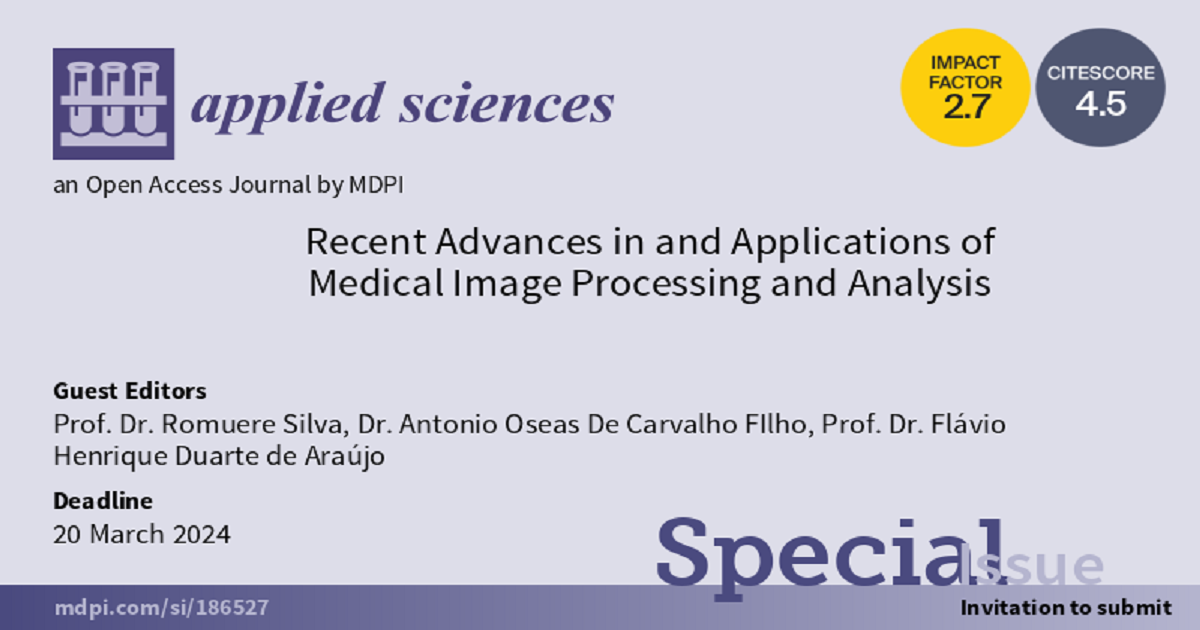Recent Advances in and Applications of Medical Image Processing and Analysis
A special issue of Applied Sciences (ISSN 2076-3417). This special issue belongs to the section "Biomedical Engineering".
Deadline for manuscript submissions: 20 September 2024 | Viewed by 565

Special Issue Editors
Interests: digital image processing; computer vision; artificial intelligence; bioinformatics
Interests: computer intelligence; computer vision; medical image processing; data analysis; computer graphics
Special Issue Information
Dear Colleagues,
In the ever-evolving field of healthcare, medical image processing and analysis have emerged as crucial pillars, revolutionizing diagnostics, treatment planning, and research. This Special Issue, titled "Recent Advances in and Applications of Medical Image Processing and Analysis," showcases the cutting-edge developments and practical applications in this dynamic domain. This collection of articles brings together experts, researchers, and innovators to present a comprehensive overview of the latest breakthroughs and their transformative impact on healthcare.
Prof. Dr. Romuere Silva
Dr. Antonio Oseas De Carvalho FIlho
Prof. Dr. Flávio Henrique Duarte de Araújo
Guest Editors
Manuscript Submission Information
Manuscripts should be submitted online at www.mdpi.com by registering and logging in to this website. Once you are registered, click here to go to the submission form. Manuscripts can be submitted until the deadline. All submissions that pass pre-check are peer-reviewed. Accepted papers will be published continuously in the journal (as soon as accepted) and will be listed together on the special issue website. Research articles, review articles as well as short communications are invited. For planned papers, a title and short abstract (about 100 words) can be sent to the Editorial Office for announcement on this website.
Submitted manuscripts should not have been published previously, nor be under consideration for publication elsewhere (except conference proceedings papers). All manuscripts are thoroughly refereed through a single-blind peer-review process. A guide for authors and other relevant information for submission of manuscripts is available on the Instructions for Authors page. Applied Sciences is an international peer-reviewed open access semimonthly journal published by MDPI.
Please visit the Instructions for Authors page before submitting a manuscript. The Article Processing Charge (APC) for publication in this open access journal is 2400 CHF (Swiss Francs). Submitted papers should be well formatted and use good English. Authors may use MDPI's English editing service prior to publication or during author revisions.
Keywords
- medical imaging
- image processing
- machine learning
- clinical applications
- innovations







